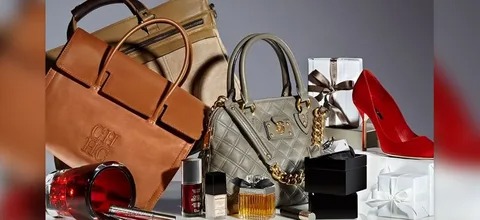Standard Shoe Box Dimensions Explained | WordsCraze
When it comes to footwear packaging, shoe boxes may seem like a minor detail. However, understanding standard shoe box dimensions is important for consumers, retailers, manufacturers, and even online sellers. From optimizing storage to ensuring accurate shipping costs, the right shoe box size can make a big difference. In this Words Craze guide, we break down everything you need to know about shoe box sizes, measurements, and industry standards. Shoe box dimensions vary by shoe type, brand, and size, ensuring proper fit and protection during storage or shipping. Understanding standard measurements helps optimize space, packaging, and logistics.
Why Shoe Box Dimensions Matter
Before we get into specific measurements, let’s explore why shoe box sizes matter in the first place:
Shipping Efficiency
Knowing the dimensions helps determine shipping costs and packaging needs.
Storage Optimization
Properly sized boxes make storage neater, whether in a closet or warehouse.
E-Commerce Requirements
Online stores need accurate product packaging information to satisfy customers.
Branding & Presentation
The box size impacts how the shoes are presented to customers—especially for premium brands.
Whether you’re a buyer, seller, or just organizing your closet, understanding shoe box sizes helps keep things organized and efficient.
Standard Shoe Box Dimensions by Category
Shoe box sizes vary depending on the type of shoes and the target market (men, women, kids). Here’s a breakdown of common standard dimensions:
Men’s Shoe Box Dimensions
Average Size
13″ x 9″ x 5″ inches (33 x 23 x 13 cm)
Designed to hold larger shoe sizes and bulkier footwear such as sneakers, dress shoes, and boots.
Men’s shoe boxes are typically wider and taller, especially for brands selling larger sizes (11 and up).
Women’s Shoe Box Dimensions
Average Size
12″ x 7″ x 4″ inches (30.5 x 18 x 10 cm)
Sleeker and slightly smaller than men’s boxes.
Women’s shoe boxes often accommodate heels, flats, or sandals. The box may vary slightly based on heel height or shoe material.
Kids’ Shoe Box Dimensions
Toddler Shoes
7″ x 5″ x 2.5″ inches (17.8 x 12.7 x 6.3 cm)
Children’s Shoes
9″ x 6″ x 3″ inches (22.9 x 15.2 x 7.6 cm)
These boxes are compact and lightweight, easy to stack and ship in bulk. Kids’ shoe boxes often feature bright colors or cartoon branding.
Shoe Box Dimensions by Shoe Type
Aside from gender and age, box sizes also depend on the type of shoe being packaged:
| Shoe Type | Typical Dimensions (L x W x H) |
| Sneakers | 13″ x 9″ x 5″ |
| Running Shoes | 12″ x 8″ x 4.5″ |
| Dress Shoes | 12″ x 8″ x 4″ |
| High Heels | 12″ x 7″ x 4″ |
| Boots (Ankle) | 14″ x 10″ x 6″ |
| Tall Boots | 18″ x 12″ x 5″ |
| Sandals/Flats | 11″ x 6″ x 3″ |
International Shoe Box Standards
In countries outside the U.S., the metric system is often used. While the box size trends remain similar, packaging may vary slightly due to regional logistics or material availability.
For example:
UK/EU Brands
may offer boxes around 32 x 20 x 11 cm.
Asian Markets
often have compact packaging to save on material and shelf space.
Shoe Box Materials and Structure
Most shoe boxes are made from corrugated cardboard or rigid paperboard, designed to be lightweight yet protective. High-end shoe brands often invest in custom, durable boxes with magnetic flaps, foam inserts, and luxury finishes.
Boxes typically include:
Removable lids or flip tops
Ventilation holes (for athletic shoes)
Branding and labels with size, model, and color info
Measuring a Shoe Box Correctly
To measure a shoe box accurately, follow this order:
Length
Measure the longest side (usually from heel to toe).
Width
Measure the side from left to right when facing the box front.
Height
Measure the vertical dimension from base to top.
All dimensions are usually listed in inches or centimeters, depending on region.
Tips for E-Commerce Sellers
If you run an online store or ship shoes regularly, here are a few helpful tips:
Always list box dimensions in your product description to avoid confusion.
Use box weight and size to calculate shipping rates accurately.
Include packaging protection like tissue paper or inserts to avoid damage during transit.
If using custom boxes, ensure your design fits standard carrier dimensions to avoid extra fees.
Platforms like Amazon, eBay, and Shopify also require box dimensions for calculating fulfillment costs.
Eco-Friendly Alternatives
Sustainability is a growing trend in packaging. Many shoe brands are now switching to:
Recyclable or biodegradable materials
Minimalist packaging with less ink and plastic
Flat-pack designs to reduce shipping volume
If you’re a brand owner, switching to eco-friendly shoe box options can not only reduce waste but also appeal to environmentally conscious customers.
conclusion | WordsCraze
Understanding standard shoe box dimensions is essential for anyone involved in footwear—whether you’re a retailer, manufacturer, online seller, or simply trying to organize your closet. From men’s sneakers to kids’ sandals, each type of footwear has an ideal box size that protects the product while maximizing space and efficiency.
At ,words craze we break down complex topics into practical guides. Whether you’re shipping shoes across the country or choosing the perfect packaging for your brand, now you have the insight you need to make smart, space-saving decisions.


